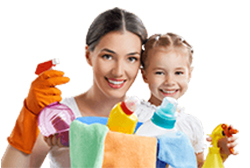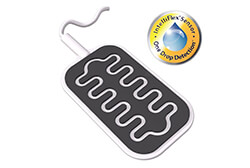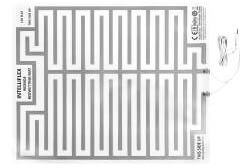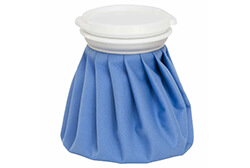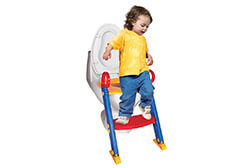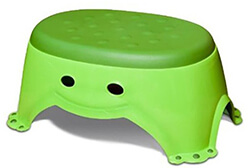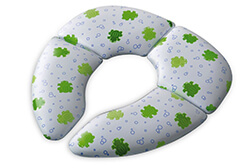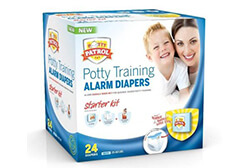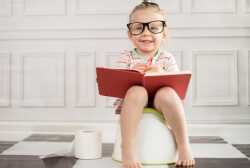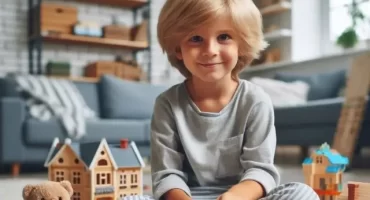Potty Training
In this article:
When to Start Potty Training
When should I begin toilet training? That’s the question that every toddler parent must answer. Well, there is no set age. Toilet training depends on physical and emotional development of your child. However, for a typically growing child, toilet training can begins around two years of age. According to Web MD, “Most children are ready to start when they are between 22 and 30 months of age, but every child is different.”
Every child potty trains at different pace, but here is a quick checklist that can help determine when and how to potty train boys and girls.
- Dry Diapers. See if your child’s diapers remains dry for at least two to three hours at a time. If you think his or her diapers are dry for few hours at stretch, your toddler is gaining bladder control.
- Understand Toilet Words. Observe if your child associate toilet with words such poop or pee or has makes any other verbal reference to toilet or potty.
- Watches You. Does your child show interest in watching you use the restroom? If yes, he or she is trying to understand what the toilet is all about.
- Bowel Control. Carefully observe your child’s pattern for bowel movement. If your child doesn’t poop at time and has bowel movements around same time every day, if he or she is mastering bowel control.
- Motor Skills. Your child should have developed certain motor skills such walking, sitting, balancing, holding small spoons, and transferring objects. Additionally, your child should be talking and show the ability to take off and pull up his pants.
- Emotional Readiness: Along with physical readiness, check for your child’s emotional readiness too. If your boy or girl is unwilling or scared of sitting on the potty, reassure him or her, but don’t physically restrain the child. Successful potty training largely depends on your child’s cooperation. So, see if your child talks about being a big boy or girl, and is willing to wear training pants instead of diapers. Also, while evaluating your child’s emotional readiness be mindful of factors such as moving, divorce or new day care or arrival of a new sibling, which can cause emotional stress to your little toddler.
Your child will be considered completely toilet-trained once he or she understands the need to use the restroom when he or she feels the urge to go. On an average, Web MD states, it takes three months to potty toilet train a boy and girl. Most kids achieve day time dryness first, and then learn to be dry at night.
Potty Training Do’s and Dont’s
Are you working on a plan on how to potty train a boy or how to potty train girls? Well, here are few potty training dos and don’ts that can make potty-training little simpler for you and your little boy or girl.
Potty Training Dos
1. Use bedwetting diapers at night. Once you begin the process of potty training use diapers only in night. During the day let your child put on training pants or underwear or leave the child bottomless couple times a day.
2. Let your child first learn to pee. Pooping is secondary. Set up an alarm for every twenty minutes and take your child to the toilet. Make your child feel it’s a game and he or she wins it once they can go to the toilet before the alarm goes off. You can use a vibrating potty training watch for this.
3. Achieve day time dryness first. It’s easier for children to remain dry during the day as they are aware of their surroundings. So, first set up a day time plan and let your child become reliably dry during day.
4. Create a schedule. Once you begin potty training closely observe what times of the day your child usually pees and poops and come up with a schedule. If you find your child has usual bladder or bowel movements after breakfast or before bath, encourage him or her use the toilet at that time.
5. Set a reward system. Create a reward system to keep your child motivated. For example, tell your child he or she would get their favorite candy or cookie if they use toilet correctly at least twice a day.
Potty Training Don’ts
1. Don’t be in a hurry. It takes time to potty train a boy or potty train girls. So, don’t rush it. If your child is not ready, wait for some time, and return to it a few weeks later. In the meanwhile, you can read potty training books and videos or let him watch you use the toilet and understand the potty training process. You can use a potty training ladder step stool like the Chummie Joy Potty Training Ladder Step Seat.
2. Don’t use pulls or diapers. Don’t use pull ups or bedwetting diapers particularly during the day as they absorb moisture and your child won’t feel the wetness.
3. Don’t reprimand your child. Handle accidents calmly. As you potty train your child there are going to be setbacks. Instead of punishing or scolding your child, motivate the young toddler to use the toilet next time he or she has an urge to pee or poop.
4. Don’t begin potty training in stressful times. Learning to move from diapers to underwear is a big a change for children, and often it can be stressful. So, don’t start the potty process in difficult times such as new jobs, moving, divorce or arrival of new sibling.
5. Don’t have a closing date. Every child potty trains at different pace. So, don’t set a deadline for potty training your child.
Every child potty trains at his or her own pace, but these potty training dos and don’ts can make achieving this big milestone easier.
Potty Training Your Child
Tips for Potty Training Boys or Potty Training Girls
Potty training boys or potty training girls like most other parenting tasks requires patience. Usually, children take three to six months to become potty trained, but sometimes it might take longer. Here are some practical tips on potty training toddlers.
Prepare your child for potty training: Potty training toddlers is a gradual process. It can take up to three months or more for your child to be fully potty trained. Before going full force with potty training familiarize your child with the process. Let your child be present in the restroom and show him or her what toilet is used for. You can read books or watch potty training videos with your child.
Get a Potty Chair: Once your child understands the basics of the toilet get him or her potty chair and personalize it. Place it in the child’s play area or living room before putting it in the bathroom. Let him or her sit on the potty chair fully clothed first and then gradually let your toddler go without diapers. As your child grows consider buying step stool or potties with ladder such as the Chummie Joy Potty Training Ladder Step Seat.
Establish the Connection. Once your child is comfortable sitting on the potty chair explain to him or her the connection between the feces and the toilet. You can empty the soiled diaper in the toilet and let your child see the feces in the toilet bowl. Let him or her flush the toilet and see feces go away.
Watch for Cues. Observe your child for any obvious cues such as change in facial expression or sudden disinterest in an activity he or she was engaged in. If your child shows any such signals he or she is probably having a bowel movement.
Take Regular Breaks. It’s a good idea to take your child for frequent potty breaks. Initially, you can take your child every hour or so and as your child begins recognizing the need to use the toilet, you can increase the interval to two to three hours.
Handle Success and Failure Gracefully. With potty training a boy and girls it is obvious to experience both success and failure. Appreciate your child when he or she uses the potty seat like a big girl or boy, but don’t express any disappoint or scold your child if he or she has an accident.
Set up a Routine. It’s good to establish a potty routine. Have your child sit on the potty chair at the same time every day. This will help in fostering the habit of using toilet every day.
Teach Cleaning Habits. As you potty train your child teach him or her to wash hands with soap and water after using the toilet. Also, show them the correct wiping techniques. It is particularly important to teach girls to wipe front to back to avoid infections.
Creating A Successful Potty Training Plan
Hooray! It’s time to say good-bye to diapers. It’s a big deal for you, but take a pause and make sure that your child is as pepped up about potty training as you are, and if you think your little one is ready to be all grown up, then here are some tips for successful potty training.
Watch For Your Child’s Readiness: For successful potty training it is essential to find out if your little boy or girl is ready. Some kids begin potty training between 18-24 months, while others are not ready until 3 or 4 years. You would know your child is ready to be potty-trained when your child begins to follow your basic instructions, begins to walk or sit down or take off and pull back his or her pants up independently, and can stay dry for two hours or more.
Create a Plan for Yourself: Successful potty-training isn’t just about your child. It’s about you too. So ask yourself– when you want to start potty-training, how much time you have to potty-train, how you will handle accidents.
Get the Right Potty: Once you think your child is ready, do your research for the right potty training product. Get a potty chair or a seat that fastens on the regular toilet seat so that child doesn’t fear sitting on the adult seat. For older kids it’s a good idea to buy a seat with step stool.
Set up a Routine: Have your child sit on his or her potty chair after breakfast or before bath or at a time when he or she usually has bowel movements. Try to have your child follow same routine every day. You can begin the routine with clothes on and once your child is comfortable with sitting on the potty seat have him or her sit bare-bottom.
Imitation is Key: Toddlers love to imitate the adults. So, let your toddler watch you use the toilet. It will help him or her understand what toilet is all about!
Foster the Habit: Gently persuade your child to use the toilet whenever he or she wants to poop or pee for a successful potty training experience. Offer help if your child finds it little hard to take off clothes and diapers. Let your child be bottomless at least twice a day to help him or her understand when it is essential to use the toilet.
Get Training Pants: As you work your successful potty training plan, buy some training pants. You can get cloth or disposable training pants. Training pants pull up and down like usual underwear, and give your toddler the confidence to undress independently, which is pivotal for becoming potty-trained.
While you are training your child, keep a few diapers handy for nighttime use, as accidents might occur.
Well, we know its hit and trial with kids. So, try a few or all of these recommended tips for successful potty training, and saying good-bye to diapers to the last few diapers.
How To Potty Train A Boy
So, your little boy is all grown up. But he is still in diaper? Don’t bite your nails or push your little dude too hard. Potty training a boy is much tougher than potty training girls. You need some patience and time, and of course some willingness on your son’s part to be potty-trained.
Potty Training Boys
Check for Readiness: See if your son is ready for potty training. You would be able to tell he is ready if he follows some basic instructions, has begun walking or sitting down or taking off and pulling back his pants up independently, and can stay dry for two hours or more. These are some of the fundamentals that can tell you if he is ready.
Get His Very Own Potty: Once your son is ready for potty training, buy an adapter seat or a potty chair to begin with. Let him personalize it with his name and stickers of favorite characters. Once he learns to urinate standing up you can get a pee-pee trainer.
Establish a Routine: Think when is the best time to take your son to use the toilet. Does he usually have a bowel movement or urge to pee before breakfast or is it after his morning playtime or before bath. If your little boy goes to day care or school then coordinate your potty training techniques with the provider.
Make Him Sit, Before He Stands: When potty training boys it’s a good idea to let him sit for pooping and peeing, because often the bladder and bowel movements occur together. Following the same position for both movements will help him understand that poop and pee belong in the potty.
Once he masters the sitting-down posture, teach him how to stand. It’s best if he has a male role model to demonstrate the standing up technique.
Let him Watch: For successfully potty training boys it is helpful to let your child watch both parents use the toilet. When your son sees that mom and dad use toilet differently, you can explain the essentials of how boys use the toilet.
Time Outside Diapers: Let your son be bottomless for sometime during the day. The more time he is outside diapers the easier it will be for him to realize that he needs to go. Keep his potty in an accessible place, somewhere close to where he is playing, and encourage him to sit on the potty every now and then.
Nighttime Training: Once your son is reliably dry during the day, try putting him to bed without diapers. How quickly he achieves nighttime dryness depends on if your boy is a deep sleeper. But if he stays dry most nights go ahead and keep him outside diapers.
Potty training boys might take a bit longer, but when the Aa ha! moment arrives give him a big pat for his accomplishment.
How To Potty Train Girls
Your baby girl is growing up fast. She is already 18-months or older and you are eager to start potty-training her. Well, you are like most parents, anxious and excited to achieve this big milestone. But rushing it won’t help. Potty training girls is faster than boys, but it still requires patience and persistence, and encouragement.
If you think your little girl is ready to be potty-trained, here are some tips for a successful and fun potty-training experience.
Go on a Shopping Spree: Instill some fun in potty training your little princess. Take her shopping and let her pick a potty seat or potty chair and training pants featuring her favorite character. Teach her to wear her training pants independently, and if possible keep her bottomless few times in the day to help her understand when she needs to go and how it feels to be wet.
Set up a Schedule: Make a consistent routine. For e.g. have your daughter use the toilet after breakfast or before bath or at a time when he or she usually has bowel movements. Try to have her follow same routine every day. If she goes to daycare or school coordinate your potty-training techniques with the day care provider or her teachers at school.
Watch and Learn: Little girls often like to imitate their mommies. When potty training girls use this habit to your advantage, and let her watch you using the toilet. Show her that you sit with your feet flat on the bathroom floor so that your pelvis is in a horizontal position. By teaching her correct sitting position you will make her feel more secure.
Teach the Correct Wiping Techniques: When potty training girls one of the most important factors teaching wiping techniques. Explain your daughter that she must sit and wipe from front to back, after a bowel movement or after urinating, to avoid any infections. Use a potty-training doll to dea bmonstrate how to wipe or let her see when you are using the restroom.
Teach Her How to Clean Hands: Ensure your daughter washes hand after using the toilet. Use sanitizer only while traveling as sanitizers cannot kill certain viruses. When at home, show her how to her clean her hands with soap and water.
Celebrate Her Success: As your daughter becomes reliably potty-trained, appreciate her success. Potty training girls is faster than boys, but nonetheless, you and your daughter both have worked hard. So, take some time off and go on another shopping spree. But this time buy her underwear!








 Our #1 Top SellerIdeal for Daily Use
Our #1 Top SellerIdeal for Daily Use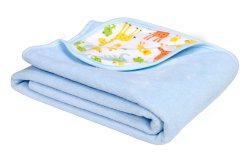 Premium Quality BeddingSoft and Comfortable
Premium Quality BeddingSoft and Comfortable Premium Quality BeddingLarge Urine Absorption
Premium Quality BeddingLarge Urine Absorption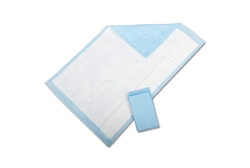 AFFORDABLE PRICECHANGE DAILY AS NEEDED
AFFORDABLE PRICECHANGE DAILY AS NEEDED
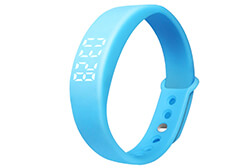 Sleek, Stylish and Affordable Watch
Sleek, Stylish and Affordable Watch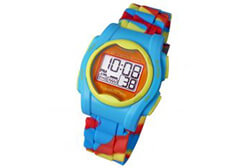 Multi-Function Watch with Numerous Features
Multi-Function Watch with Numerous Features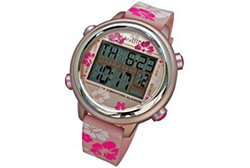 Recommended watch for teens and adults
Recommended watch for teens and adults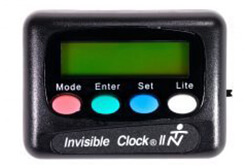 Perfect for medication and other reminders
Perfect for medication and other reminders









